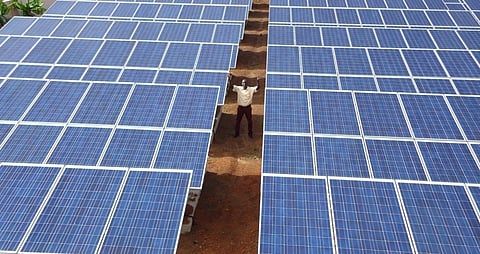Maintaining a Clear Intention to Keep 1.5°C within Reach
The world is in a critical decade for climate action. This is not hyperbole – the UN’s Intergovernmental Panel on Climate Change says limiting warming to around 1.5°C requires global greenhouse gas emissions to peak before 2025 at the latest, and be reduced by 43% by 2030.
That’s seven short years from now.
However, the world is currently off course to keep 1.5°C within reach. A stark report from UN Climate Change shows implementation of current pledges by national governments puts the world on track for a 2.5°C warmer world by the end of the century.
At COP27, countries reaffirmed their commitment to limit global temperature rise to 1.5°C above pre-industrial levels.
That means the global economy must “mitigate” climate change – in other words, we must reduce or prevent the emission of greenhouse gases to get us to where science says we need to be by 2030.
Dubai Chamber of Commerce Launches Solar & Renewable Energy Business
In line with that, a mitigation work programme was established in Sharm el-Sheikh, aimed at urgently scaling up mitigation ambition and implementation. The work programme will start immediately and continue until 2026 when there will be a review to consider its extension.
At COP27, governments were also requested to once again revisit and strengthen the 2030 targets in their national climate plans by the end of 2023, as well as accelerate efforts towards the phasedown of unabated coal power and phase-out inefficient fossil fuel subsidies.
Governments stressed the importance of a clean energy mix, including low-emission and renewable energy as part of diversifying energy sources and systems.
So what should we keep an eye on in 2023? Countries will be expected to come to the table with stronger and more ambitious climate plans than they did in 2022. These plans will be submitted to the UN Climate Change secretariat throughout 2023.
Toward the end of next year, the secretariat will analyze the plans to see how closely (or not) those plans keep the 1.5°C limit in reach.
Also critical to meeting the temperature limit is the first global stocktake, which held its second technical dialogue at COP27.
The stocktake is where countries and non-Party stakeholders come together to discuss where they are collectively making progress towards meeting the goals of the Paris Agreement – and where they’re not.
“The global stocktake is an ambition exercise. It’s an accountability exercise. It’s an acceleration exercise,” said Stiell.
“It’s an exercise that is intended to make sure every Party is holding up their end of the bargain, knows where they need to go next and how rapidly they need to move to fulfill the goals of the Paris Agreement.”
These discussions are a key component towards the goal to limit global warming to 1.5°C. At COP28, the key findings of the stocktake process will be synthesized and presented, and their implications discussed and considered.
Ultimately, these will result in stronger and more ambitious climate plans from national governments.
Read More: Countries Present Climate Ambition and Action at COP27


